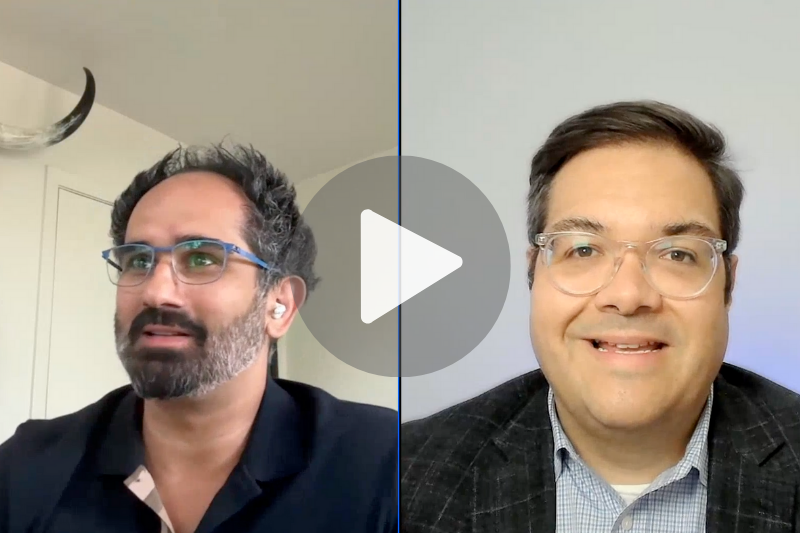
State of the Union: 2026 Predictions for Campaigns
November 5, 2025
State of the Union: 2026 Predictions for Campaigns
As we look ahead to 2026, campaign professionals are facing constantly evolving changes and best practices in technology, voter behavior, and how information is shared. In a recent Campaigns & Elections webinar, Prompt.io President Farz Sokhansanj sat down with Eric Wilson, Executive Director at the Center for Campaign Innovation, to talk about what campaigns need to know now to prepare for what’s next.
You can hear the full conversation on Campaigns & Elections, but here are some of the biggest takeaways.
The Post-iOS 26 Update
The latest iOS 26 update brought a slight panic over texting campaigns because of a privacy option to filter unknown senders. That’s not great news for bad actors, but great news for those already following texting best practices.
The writing on the wall is that voters do not like the volume of messages they are consuming. Smart campaigns should already be cognisant of that. So while these changes may frustrate some teams, anything that enforces best practices like sending targeted and relevant messages is a net positive for campaigns overall.
A 2026 Texting Essential: Personalization
Texting remains one of the most powerful tools in campaign outreach…but only if it’s done right.
Both Eric and Farz emphasized that personalization and segmentation are where the real value lies. The campaigns that fall short are the ones still treating texting like a fishing net instead of what it truly is: an opportunity to have individual conversations with voters.
Smart campaigns will leverage texting to build relationships, not just shouting a reminder or two.
The Influence of Influencers and Creating Your Own Audience
Earned media is still essential to campaigns, but media fragmentation is nothing new, and not every campaign needs to chase the biggest podcast. Instead, focus on finding the right voices that reach specific communities. In an age of media fragmentation, voters turn to people they trust. More and more, it looks like content creators, local figures, and niche podcasters.
In fact, Eric shared insights from a Post-Election survey where 25% of respondents identified as ‘news avoiders.’ They’d rather talk about politics with friends and family than consume traditional political news. And when they do look for information, content creators are among their top sources.
Campaigns that invest in relational organizing and strategic influencer partnerships are likely to find a breakout moment in 2026.
Data & Polling: Diversify Your Inputs
“A representative sample is harder to pin down than ever,” Eric explained.
Polling remains extremely viable, but as voter media habits diversify, so should your data sources. Campaigns relying on a single poll risk missing the full picture. The solution? Equally diverse data streams that mirror the real information ecosystem your voters live in.
AI: Mind Your P’s and Q’s (Actually, Your S’s and M’s)
AI is reshaping campaign operations, freeing staff from repetitive data-entry tasks and enabling them to focus more on engaging with voters.
Eric offered a timely reminder: “I really don’t believe we should force human beings to read stuff that no human being bothered to write.”
AI shouldn’t replace authentic messaging, it should enhance it. Repurposing and adapting content that a human wrote? Great. Generating generic filler? Not so much.
When evaluating AI in campaign technology, Eric introduced two frameworks to keep campaigns grounded.
The 4 S’s: Scale, Sophistication, Scope, Speed
Use these as your foundation to ask why AI or any new tool deserves a place in your stack. If it doesn’t improve at least one of these four, it may not be worth your investment.
The 4 M’s: The Right Message, Moment, Medium, Messenger
This is the test for whether your communications hit the mark.
“Send the right message at the right moment using the right medium with the right messenger,” Eric explained. Where AI has been extremely helpful in cracking this formula is by taking existing content you have to transform your message and formatting it to fit the right moment, medium, and messenger, depending on the channel.
The best campaigns will apply the 4 M’s before deploying messages and again afterward to measure success.
Don’t Forget: A Loss Is a Lesson
Every campaign cycle offers data, insights, and opportunities to improve. 2026 will be no different, but the campaigns that win will be those that combine smart technology, authentic communication, and strategic adaptation.
Check out the full conversation between Farz and Eric on Campaigns & Elections.

.png)
.png)